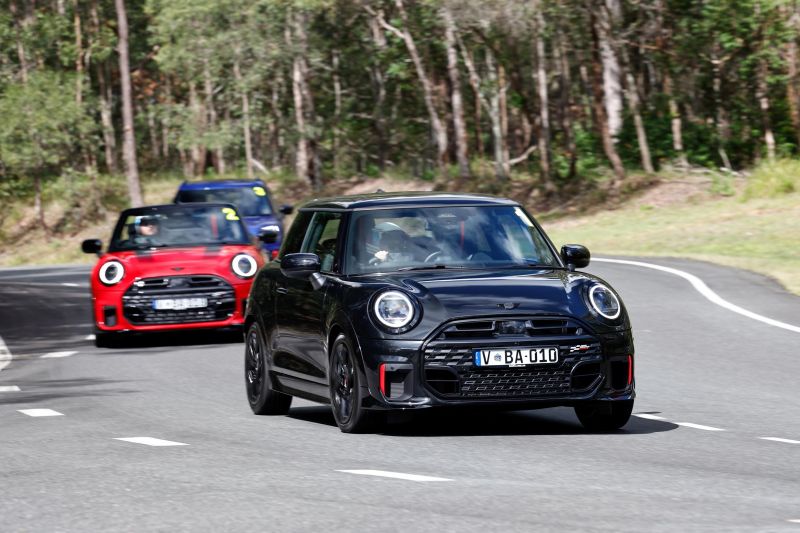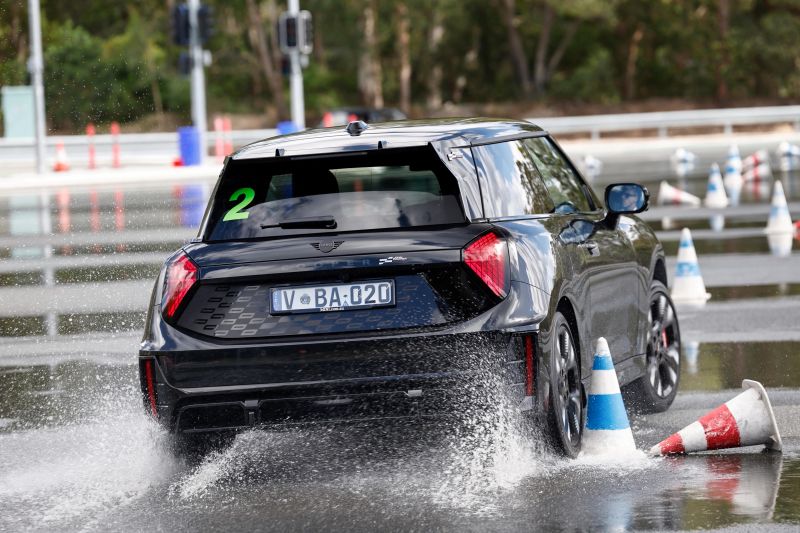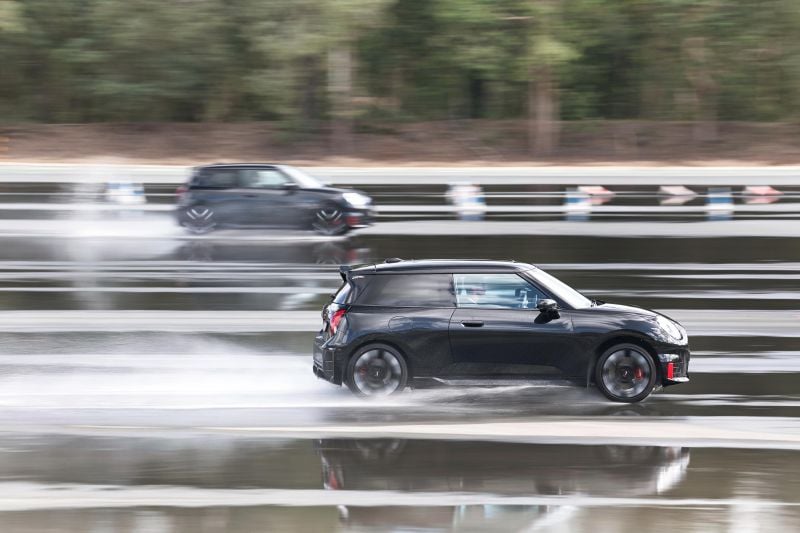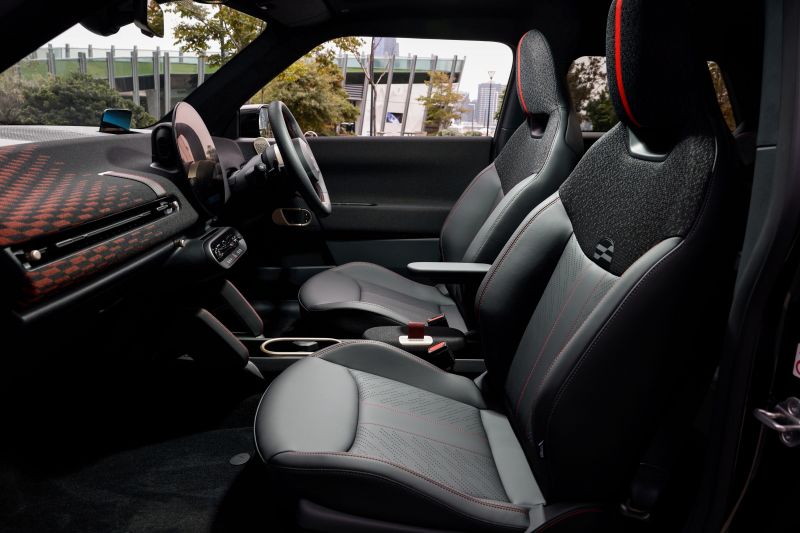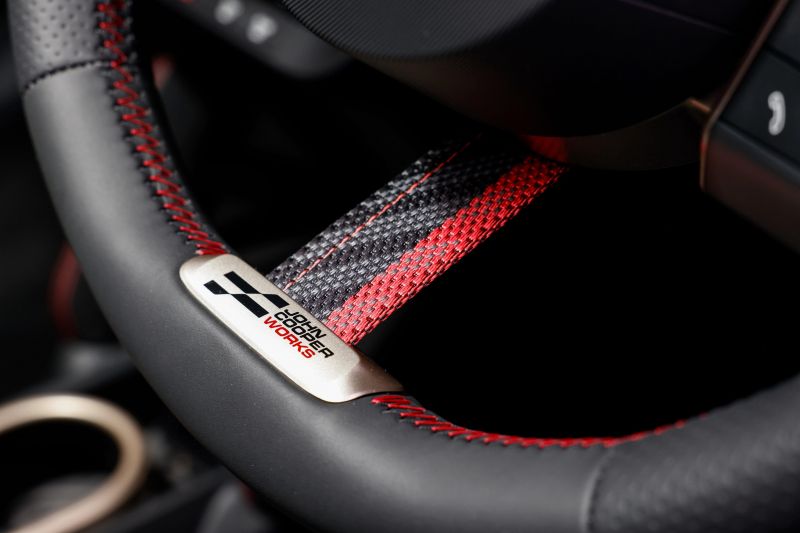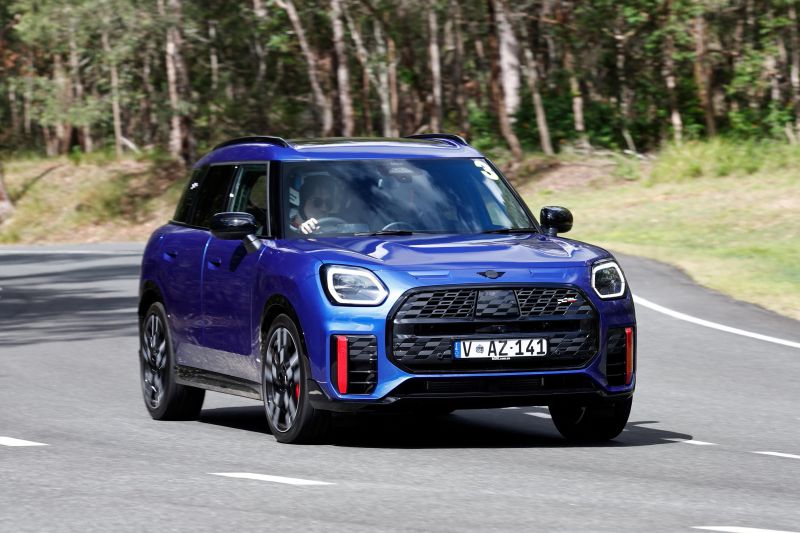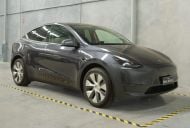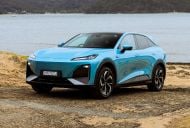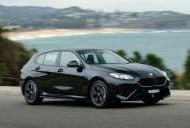Mini has launched its most comprehensive JCW range to date, featuring everything from smoking-hot petrol-powered hatchbacks to stylish convertibles and, for the first time ever, all-electric variants.
And yes, they’ve never looked better, while still offering the BMW-owned small car brand’s trademark go-kart handling.
For as long as I can remember, the Mini Cooper S was the one to have – the spirited, tightly wound hot hatch that could out-hustle a Porsche 911 on a tight ribbon of tarmac from Monte Carlo to Mayfair.
Hundreds of new car deals are available through CarExpert right now. Get the experts on your side and score a great deal. Browse now.
But the game changed in 2002 when BMW, which purchased the iconic British brand in 1994, introduced the first JCW tuning kit for the R50-series Mini Cooper.
Born from motorsport pedigree and crafted by John Cooper’s son, Mike Cooper, the JCW sub-brand evolved quickly from official aftermarket upgrade to full factory performance hero.
In 2006 – the same year Alborz Fallah and I founded CarAdvice – I got behind the wheel of the first factory-built JCW: the Mini Cooper S JCW GP (R53).
It was stripped out, supercharged, and stuck to the road like epoxy. Limited to just 2000 units globally, it had no rear seats and no apologies. It was brutal and brilliant.
We missed a drive in the turbocharged GP2 but were there at the Nurburgring – alongside Charlie Cooper, the grandson of John Cooper and son of Mike – for the reveal of the GP3 in 2019.
Charlie, now shaping the future of JCW with an eye toward electrification, remains a proper enthusiast, as evidenced by a message he sent me not long ago.
“The new range of JCWs truly embodies what John Cooper Works is all about: razor-sharp handling, a proper go-kart feel that leaves a grin on your face.
“The three-door hatch, with its racing pedigree, has proven itself at the hardest race in the world, securing a class victory at last year’s Nürburgring 24 Hours with Bulldog Racing. It’s not just for the road – it’s born for the track.”
Mini Australia hasn’t confirmed whether a GP4 is in the works, but the spotlight is now squarely on the all-new JCW lineup, which is head-turning, sharp-edged, and now officially electrified.
Enter the all-electric Mini JCW (JCW E) – a car I drove on a tight gymkhana course at the RACQ Mobility Centre in Queensland recently. It may be electric, but it has all the hallmarks of Mini’s go-kart DNA, along with arguably the most desirable design in the current JCW stable.
Finished in Midnight Black II, with body-coloured roof and subtle red accents (no stripes), it looks fast just standing still. From the pronounced diffuser and motorsport-style spoiler to the vertical air curtains and chequered-flag tailgate, it’s unashamedly racy.
Inside, a 9.4-inch circular OLED display anchors the dash, doubling as both infotainment hub and digital instrument cluster. The steering wheel, trimmed in vegan leather with retro vibes and modern functions, feels fantastic in the hands.
Bronze metallic accents, race-style red straps, and subtle Easter eggs bring texture, tactility and curiosity to a cabin that genuinely punches above its weight in terms of premium feel.
The JCW-specific seats in black vegan leather trim with contrast stitching are equal parts comfortable and supportive, even when pushing the limits.
Under the skin, a 190kW front-mounted motor and 54.2kWh lithium-ion battery send 350Nm to the front wheels. The Mini JCW is claimed to hit 100km/h in 5.9 seconds on its way to a top speed of 200km/h, while offering a WLTP range of up to 371km. DC fast-charging at 95kW gives you 80 per cent of battery capacity in 30 minutes.
In Go-Kart mode, throttle response sharpens, the steering tightens, and the display glows red. A boost paddle on the wheel delivers an extra 20kW when you need it and synthesised cabin sounds (borrowed from BMW’s i4 M50 playbook) add another layer of theatre.
Despite being nearly 400kg heavier than the petrol JCW hatch, the electric version feels tight, responsive, and impressively agile. Revised suspension and steering calibration tame the heft. This is a genuine driver’s car.
I also sampled the JCW Countryman on the same course. Built on BMW’s FAAR platform that’s shared with the X1, it feels every bit the muscular crossover.
With 233kW and 400Nm from its 2.0-litre turbo-four, it’s the most powerful Mini ever. And the quickest – with a 0-100km/h claim of 5.4 seconds.
It hauls. It corners. And it stops on a dime thanks to JCW Performance brakes and adaptive dampers.
And it does it all while offering space for five and up to 1660 litres of boot capacity. If there’s a more complete compact performance crossover out there that looks this good and goes with equal flair, I haven’t met it.
Sure, the three-door JCW hatch remains the purist’s pick – light, compact, and surgically precise. But as a daily weapon with all-weather confidence and punch, the Countryman has found its way onto my personal wish list.
In a world of increasingly soulless EVs and anonymous electric SUVs, the 2025 Mini JCW lineup is a masterclass in how to stay fun, fast, and relevant.
The badge might be small, but the experience lives large.
| Model | Price (before on-road costs) | Powertrain | Drivetrain | Claimed 0–100 km/h (seconds) |
|---|---|---|---|---|
| JCW 3-Door Hatch (Classic) | $57,990 | 170kW 2.0L turbo-petrol | FWD | 6.1s |
| JCW 3-Door Hatch (Favoured) | $60,990 | 170kW 2.0L turbo-petrol | FWD | 6.1s |
| JCW Electric Hatch (JCW E) | $63,990 | 190kW electric | FWD | 5.9s |
| JCW Aceman (Electric SUV) | $65,990 | 190kW electric | FWD | 6.4s |
| JCW Countryman ALL4 (Classic) | $70,990 | 233kW 2.0L turbo-petrol | AWD | 5.4s |
MORE: Everything Mini

